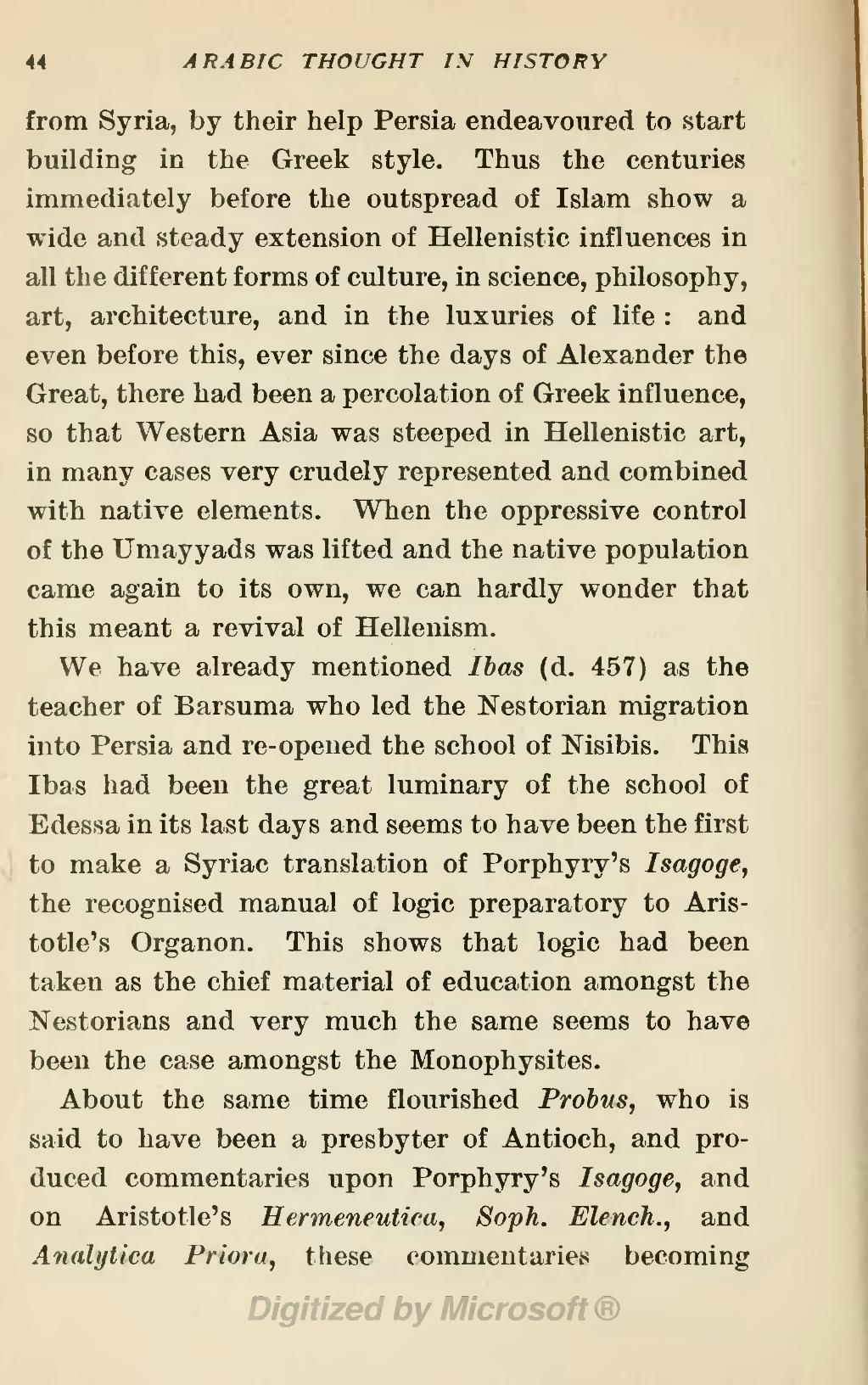from Syria, by their help Persia endeavoured to start building in the Greek style. Thus the centuries immediately before the outspread of Islam show a wide and steady extension of Hellenistic influences in all the different forms of culture, in science, philosophy, art, architecture, and in the luxuries of life: and even before this, ever since the days of Alexander the Great, there had been a percolation of Greek influence, so that Western Asia was steeped in Hellenistic art, in many cases very crudely represented and combined with native elements. When the oppressive control of the Umayyads was lifted and the native population came again to its own, we can hardly wonder that this meant a revival of Hellenism.
We have already mentioned Ibas (d. 457) as the teacher of Barsuma who led the Nestorian migration into Persia and re-opened the school of Nisibis. This Ibas had been the great luminary of the school of Edessa in its last days and seems to have been the first to make a Syriac translation of Porphyry's Isagoge, the recognised manual of logic preparatory to Aristotle's Organon. This shows that logic had been taken as the chief material of education amongst the Nestorians and very much the same seems to have been the case amongst the Monophysites.
About the same time flourished Probus, who is said to have been a presbyter of Antioch, and produced commentaries upon Porphyry's Isagoge, and on Aristotle's Hermeneutica, Soph. Elench., and Analytica Priora, these commentaries becoming
